Former Faculty
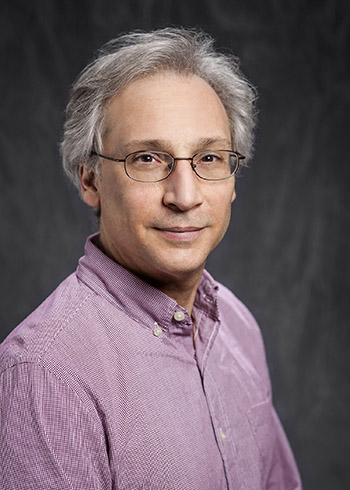 Principal Investigator
Principal Investigator
John F. DiTusa
Professor of Physics, Department Chair, Louisiana State University
Dr. DiTusa’s experimental condensed matter physics research program focuses on magnetic semiconductors and related magnetic materials, quantum critical behavior and non-Fermi liquid behavior in carrier doped small band-gap semiconductors, magnetoresistive materials and mechanisms of magnetoresistance, and quantum spin systems. Dr. DiTusa’s awards and honors include a National Science Foundation Career Award (1997), LSU College of Basic Sciences Faculty Research Award (2000), and the Non-tenured Faculty Award in Natural & Physical Sciences (Phi Kappa Phi Honor Society). He is a member of the American Physical Society and serves on the Board of Governors for the Institute of Complex Adaptive Matter (ICAM). Dr. DiTusa has published nearly 60 peer-reviewed papers and has been awarded funding from the National Science Foundation, the Department of Energy, the Louisiana Board of Regents, Joint Institute for Neutron Scattering, LSU Office of Research, and others. He is a frequent speaker at national and international conferences and meetings and has served as a referee for numerous journals including Science, Nature Materials, Physical Review Letters, Journal of Physics: Condensed Matter, and many others. Dr. DiTusa is currently Dean of the School of Science at Indiana University--Purdue University Indianapolis.
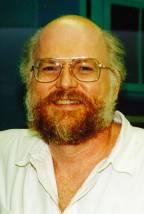 Les Butler
Les Butler
Professor of Inorganic and Materials Science, Louisiana State University
Les Butler received his BS (1977) from the University of Arkansas, then studied inorganic chemistry with Prof. Ted Brown at the University of Illinois at Urbana-Champaign. His PhD (1981) research was the construction of a novel solid-state NMR spectrometer and its applications to inorganic materials. Postdoctoral research (1981-93) in photochemistry and solid-state chemistry was done at CalTech with Prof. Harry Gray. He started at LSU as an assistant professor in 1983. His group built several solid-state NMR spectrometers and used magnet facilities at the National High Magnetic Field Laboratory and Los Alamos to study organometallic complexes, catalysts, polymer blends, biological samples, and environmental samples. He spent two years at the National Science Foundation (2001-02) as a program officer in chemistry. Now, his research program has moved in 3D+ imaging with X-ray and neutrons, mostly in materials science and polymer blends.
 Jayne Garno
Jayne Garno
Professor of Chemistry, Louisiana State University
Dr. Garno’s investigations apply a nanoengineering approach using structural characterization, nanofabrication and properties measurements at surfaces. Research projects provide cross-disciplinary training for students, applying analytical methods to solve problems in combination with systematic studies using analytical chemistry, surface science and protein chemistry. Scientific discoveries in the emerging field of nanoscience are the foundation of new technologies in areas such as molecular electronics, bioinformatics, medical diagnostics, and drug discovery. Techniques applied in her lab for characterizing thin films, biomolecules and nanomaterials include high-resolution imaging using atomic force microscopy (AFM) and scanning tunneling microscopy (STM), fluorescence microscopy, cConductive probe measurements using AFM/STM, measurements of surface properties (elasticity, magnetic, friction and adhesion forces), and development of nanoscale lithographies for structuring surfaces. Her awards and honors include Emerging Young Investigator of the Gordon Research Conference, Bioanalytical Sensors (2012), LSU Alumni Association Faculty Excellence Award (2011), Camille Dreyfus Teacher-Scholar Award (2010), Presidential Early Eareer Award for Scientists and Engineers from PECASE (2009), and many others.
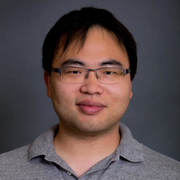 Jin Hu
Jin Hu
Research Assistant Professor of Physics, Tulane University
Dr. Hu’s research interests include magnetism, superconductivity, and correlated electrons in quantum materials. Dr. Hu participated in a recent quantum oscillation study on the drastic pressure effects on extremely large magnetoresistance in WTe2. He previously worked as a postdoctoral researcher with the Louisiana Consortium for Neutron Scattering. Jin Hu recently accepted a position as Assistant Professor of Physics at the University of Arkansas.
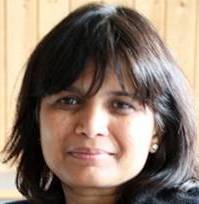 Jyotsana Lal
Jyotsana Lal
Visiting Research Associate Professor, Louisiana State University
Dr. Lal’s work focuses on the structure and internal dynamics of proteins and coherent diffraction imaging of complex polymer matrices. Her research interests include the development of novel methods for the use of x-rays and neutrons for the study of biological and soft matter materials. She previously worked as biophysicist in the materials science division at Argonne National Lab.
Y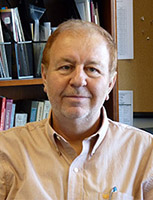 uri Lvov
uri Lvov
Tolbert Pipes Eminent Endowed Chair on Micro and Nanosystems, Louisiana Tech University
Dr. Lvov’s area of specialization is nanotechnology, specifically the nanoassembly of ultrathin organized films, bio/nanocomposites, nano/construction of ordered shells on tiny templates (drug nanocapsules, shells on microbes and viruses), and clay nanotubes for controlled release of bioactive agents. He was among pioneers of the polyelectrolyte layer-by-layer (LbL) assembly - a nanotechnology method which was first described in papers in 1993. LbL nanoassembly has found industrial applications including eye lens modification, improvement of cellulose fiber for better fabric and paper, microcapsules for insulin sustained release and cancer drug nanocapsules. His second pioneer topic –is composite organic-inorganic materials based on halloysite clay nanotubes. Y. Lvov has co-edited three books and written or co-written 22 book chapters and more than 230 peer-reviewed papers. His total citation number is 13,040 and Lvov’s Hirsch index is 58. His awards and honors include the Alexander von Humboldt Prize for lifetime achievements in nanochemistry (2014), Best of Small Tech US National Innovator Award (2008), Louisiana State’s Top Researcher in New Technologies (2007), Royal Chemical Society Publication Award (1999, UK), Alexander von Humbolt Fellowship (1991-93, Germany), and many others. He also serves on the editorial board for the Journal of Biomedical Nanotechnology.
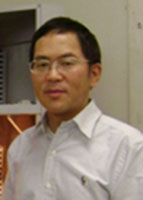 Zhiqiang Mao
Zhiqiang Mao
Nicholas J. Altiero Professor in Science and Engineering, Tulane University
Dr. Mao leads the Tulane Quantum Material Lab, where he researches low temperature condensed matter physics, particularly the emergent phenomena of strongly correlated oxides and Fe-based superconductivity. His particular interest in oxides lies in ruthenates, which have attracted tremendous interest due to their fascinating exotic properties, such as spin-triplet superconductivity. Dr. Mao became the first holder of the endowed Nicholas J. Altiero Professorship in Science and Engineering in 2011. He was also honored with the Tulane Presidential Early Career Development (2005), the Cottrell Scholar Award (2005), the National Science Foundation Career Award (2007). He has published over 241 peer-reviewed papers, with the citation h-index of 38. Funding for his research has come from the National Science Foundation, Department of Energy, Army Research Office, Research Corporation and Louisiana Board of Regents. He is also an elected APS fellow. Dr. Mao is currently Professor of Physics at The Pennsylvania State University, College Park, PA.
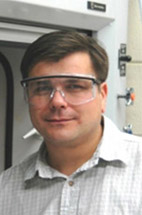 Evgueni Nesterov
Evgueni Nesterov
Professor of Organic and Materials Chemistry, Louisiana State University
Dr. Nesterov’s research spans over the development of functional organic materials that may eventually replace traditionally used materials with cheaper and better-performing new ones. The “bottom-up” paradigm which is being pursued in his group starts from a thorough molecular design, followed by transferring the individual molecule’s property into a bulk material or device through a controlled molecular assembly approach, and subsequent detailed studies and characterization of the resulting materials and devices. The individual projects span across various areas such as preparation of molecularly organized nanostructured thin-film electronic materials and devices, design of fluorescent chemosensors, development of synthetic methods to prepare complex conjugated polymers and block copolymers with precisely controlled molecular composition, etc. At the core of his group efforts lies the ability to synthesize complex organic molecules, which allows tackling challenging research problems at the interface of organic and materials chemistry. The fascinating multifaceted properties of extended -conjugated oligomers and polymers make them a unique subject of studies, capable of taking his research to different, often dissimilar areas, and offering breadth of potential practical applications. Although such practical applications are a desirable and welcome target, Dr. Nesterov’s group puts the main emphasis on deciphering the fundamental details of the underlying processes, discovering new phenomena, establishing connections between molecular structure and resulting properties, therefore contributing into better understanding of the basic principles of physical organic chemistry. This multidisciplinary research program combines contemporary and traditional areas of physical organic and synthetic organic chemistry, macromolecular chemistry, photochemistry, and theoretical and computational chemistry. Dr. Nesterov was awarded the NSF Career Award (2006) and Ralph E. Powe Junior Faculty Enhancement Award (2005). Dr. Nesterov accepted a position as Professor of Chemistry at Northern Illinois University.
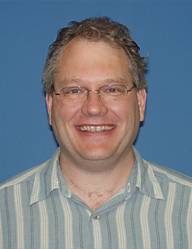 Phillip Sprunger
Phillip Sprunger
Professor of Physics, Louisiana State University
Dr. Sprunger is focused on understanding interconnecting atomic/morphological, electronic/magnetic
and chemical/chemisorption properties of various surface/thin-film/nanophase systems
using complementary experimental probes. This includes employing synchrotron-based-VUV
photoemission (high-resolution and spin-resolved), -IR spectromicroscopy, -x-ray absorption,
along with electron energy-loss spectroscopy, and variable-temperature scanning tunneling
microscopy and atomic force microscopy. Systems that are currently being investigated
include heteroepitaxially grown metal-on-metal (e.g. Ag/Cu, Co/Ag, Ag nanowires/Cu)
and metal-on-semiconductor systems (e.g. Ag/GaAs, Be/Si), intermetallic alloy thin-film
and surface systems (e.g. FeAl), simple and complex adsorbate and biological overlayers
(amino acid/polymers/SiO2 and Au), polymer photo-induced degradation, and metal on
metal-oxide nano-structures (e.g. Ag/Al2/O3/FeAl). Research emphasis is on correlating
electronic/magnetic/photonic properties (hybridization, band-structure electron-phonon,
electron-electron interactions) with atomic structure (STM, AFM, LEED, SEXAFS).
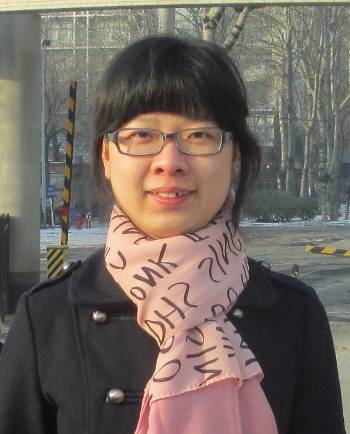 Weiwei Xie
Weiwei Xie
Assistant Professor of Chemistry, Louisiana State University
Weiwei Xie received her B.S. from the Nankai University (Tianjin, China) in 2010 and her Ph.D. from Iowa State University (with G. J. Miller) in 2014. Following postdoctoral work with R. J. Cava in Princeton University, she joined the faculty at LSU in 2016. Her group’s research focuses on experimental and theoretical solid-state materials, with a specific emphasis on functional metal-rich compounds, like superconductors, semiconductors, and magnetic materials. In 2018, she was awarded Beckman Young Investigator. Dr. Xie recently accepted a position as Assistant Professor of Chemistry at Rutgers University.
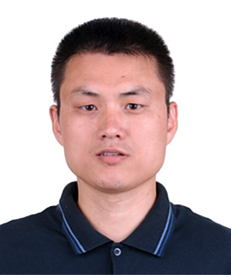 Qiang Zhang
Qiang Zhang
Research Assistant Professor of Physics, Louisiana State University
Dr. Zhang's research focuses on dielectric, ferroelectric, multiferroic materials, Fe-based superconductors and complex magnetic materials exhibiting spin glass, magnetocaloric effect, magnetoresistance, exchange bias effect, spin-orbit couplings, and strongly correlated electron behaviors. He previously worked as a postdoctoral research associate in the Department of Physics & Astronomy at Louisiana State University, in the Division of Materials Science & Engineering at Ames Laboratory, and in the Department of Physics & Astronomy at Iowa State University. He earned his master’s and doctoral degrees at the Institute of Metal Research, International Centre for Materials Physics, at the Chinese Academy of Science, where he received the Shi Changxu Scholarship. During his studies he participated as an exchange PhD student in the Magnetic and Superconducting Materials Group at Leiden University in the Netherlands. He also served as a Marie Curie Fellow at the Centre National de la Recherche Scientifique in Caen, France and as a Newton International Fellow at the University of Glasgow, UK. Qiang Zhang recently accepted a position as a research scientist at Oak Ridge National Laboratory.